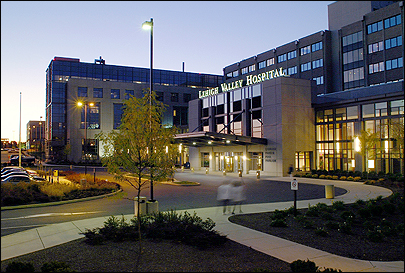Lehigh Valley Hospital and Health Network (LVHHN), a group of three hospitals in eastern Pennsylvania, is gearing up to track its surgical patients with an ultra-wideband (UWB) RFID system. The hospital network hopes the technology will improve communication among staff and with patients’ families and friends, ultimately providing better, more efficient care.
LVHHN is working with Patient Care Technology Systems (PCTS), which is providing its Amelior ORTracker software to monitor the physical locations of patients, as well as the status of their care, from pre-op to surgery and on to post-op. Operating room (OR) nurses, for example, can use computers equipped with the software to pull up surgery schedules, patient data and maps, then determine if a particular patient has been cleared for surgery by the staging department (where patients go to be checked and readied for their operations).

PCTS’ system will track tags from Parco Wireless. Parco’s tags operate at the 6.5 GHz band and utilize UWB technology, whereby devices emit a series of extremely short pulses—billionths of a second or shorter—across a frequency segment wider than that used by conventional RFID tags.
With such easy access to real-time information, LVHHN hopes to improve communication. “Our primary motivation for going into this is to be able to enhance communication between departments and the care providers, regarding the status of patients, as well as communicate with families about the status of the patients,” says Brian Leader, administrator of perioperative services at LVHHN. “Now, if you want to find out about a patient, you typically have to page someone by picking up a phone and dialing a number. Then you have to wait for the person to call back. With the Amelior ORTracker system, everyone can simultaneously see the patients’ status.”
Once a patient checks in to an LVHHN hospital for a scheduled operation, a receptionist will input that person’s data into Amelior ORTracker, Leader explains, which will be shared with staff in the staging department. The staging department will then retrieve the patient, who will be given a battery-powered UWB RFID badge, a little smaller than a credit card, with a unique ID number associated with an ID number in LVHHN’s OR scheduling system.
LVHHN still hasn’t decided if the badge will be clipped to a patient’s hospital gown, or to the IV pump assigned to that patient. Regardless, every badge will include several buttons, each of which will be used to document specific procedures. For example, once an anesthesiologist checked in with a patient, a nurse would press a particular button, causing the badge to transmit a time-stamp, along with its ID number, to various receivers positioned throughout the OR department, documenting that the event has occurred. A nurse would later push a separate button once the patient had been cleared and was ready for surgery.
Leader says the badges will have at least three buttons, but that PCTS will work with LVHHN to develop the system so “you can capture more than three events through those buttons.” He says PCTS has informed him there are several ways the buttons could be used to indicate and capture events, such as pressing a single button a given number of times, or pressing several buttons in a specific sequence. LVHHN will purchase about 100 badges, which are reusable.
In addition, the UWB RFID system will document when a patient is wheeled into the OR, and LVHHN also plans to use the buttons to mark events during surgery. “Once in the OR, we want to know when the procedure started, when the patient went to sleep and when the incision occurred,” Leader says. “We track that now, but we have to manually key in all that information. So this will semi-automate that.”
The hospital network plans to begin implementing the PCTS tracking software, Parco software, middleware, badges and fixed-position interrogators within the next several weeks. The interrogators will read the tags and calculate the radius between the tag and reader. To compute the tag’s location, Parco’s software will utilize the radius information from at least three readers. The location will then be sent via middleware to a database accessible by Amelior ORTracker.
LVHHN will first implement the system in its Cedar Crest facility, where approximately 50 surgeries are performed daily, and hopes to have it up and running by the end of the summer. It then plans to implement the system in the OR departments of its two other facilities (all three are within a 20-mile radius) within the next year and a half.
According to Leader, the tracking system will provide the hospital network with a wealth of data on its surgical processes. “We’ll be able to study those processes in a way we haven’t before,” he says, “to see if there are ways to improve upon them. We will have all this data and analyze our processes at a level of detail that we’ve not been able to. We are looking forward to that, and hope to see some process efficiencies gained with this system.”
Additionally, LVHHN hopes to extend the tracking capabilities to equipment, such as infusion pumps and wheelchairs, as well as to emergency rooms and other departments in the hospital network. “Our OR project,” Leader explains, “is a pilot for the whole organization.”

